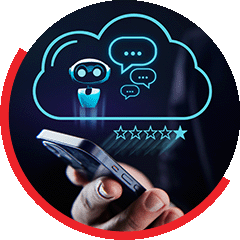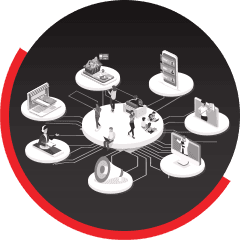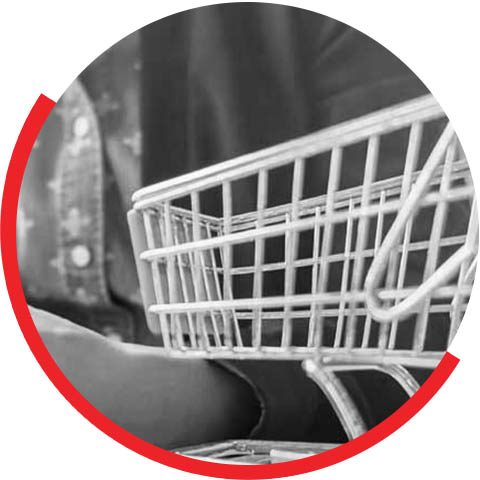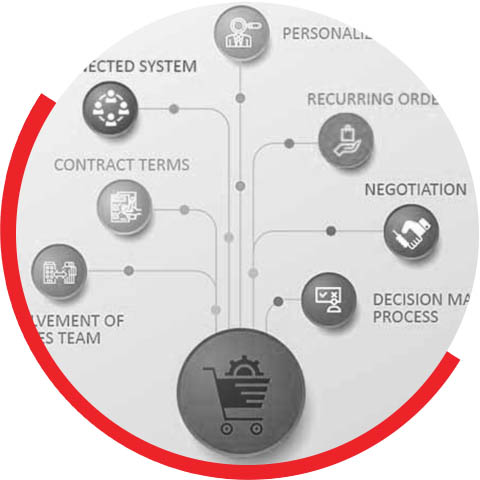Introduction:
In the dynamic realm of customer service, businesses continuously seek innovative ways to provide exceptional experiences that are both personalized and efficient. Sonata Software Ltd, a global Modernization engineering company, has made a groundbreaking leap by integrating OpenAI's ChatGPT with SAP Commerce Cloud. This fusion of cutting-edge technologies unlocks new possibilities for customer interactions and sets a new standard for conversational customer experience (CCX). In this blog, we will explore the exciting features offered by this integration, revolutionizing the way businesses engage with their customers and optimize their operations.
Enhancing Customer Experience and Boosting Business Efficiency: The Power of ChatGPT and SAP Commerce Cloud Integration.
The integration of ChatGPT and SAP Commerce Cloud is poised to transform customer engagement by leveraging the Retrieval Augmented Generation (RAG) Model. This combination harnesses the strengths of AI-driven ChatGPT and the robustness of SAP Commerce Cloud, enabling businesses to provide real-time assistance and personalized solutions across a range of customer touchpoints. From product inquiries to order tracking and personalized recommendations, this integration creates a seamless and intuitive shopping experience, surpassing customer expectations.
Exciting New Experimental Features Unveiled!
1. Intelligent Order Inquiry:
With ChatGPT and SAP Commerce Cloud integration, businesses gain the power to retrieve order information from the extensive commerce platform database seamlessly. Leveraging ChatGPT's language model, businesses can provide customers with real-time updates tailored to their specific inquiries. This intelligent order inquiry feature ensures efficient and personalized conversational experiences, fostering customer satisfaction.
2. For Business-to-Consumer (B2C) Capabilities:
- Obtain comprehensive order summaries, including payment details, delivery status, and more.
- Easily search and filter orders based on specific criteria such as order numbers or dates.
- Track order status in real-time and receive prompt updates on any changes or delays.
- Empower customers with a user-friendly interface to create and manage support tickets for efficient issue resolution.
3. Expanding to Business-to-Business (B2B) Capabilities (Building on B2C Capabilities):
- Access enhanced order information tailored to business customers, including order history, invoice details, and shipping information.
- Enable users to search for orders based on customer-specific criteria, such as sold-to account or sold-to party, providing a comprehensive view of business transactions.
4. For Business User Capabilities (Admin):
- Gain a summary of all orders placed within a specific day, week, or month, providing valuable insights into order volume and trends.
- Obtain an overview of overall transactional revenues, allowing admins to track and analyze revenue patterns over time.
- Identify the most sold product during a specified period, facilitating pricing strategies and sales forecasting.
- Generate detailed reports and analytics to assess order metrics, customer behavior, and revenue performance, enabling informed decision-making.
5. Effortless Multilingual Content Translation:
To expand business horizons and cater to a diverse customer base, ChatGPT, and SAP Commerce Cloud integration offer seamless content translation into multiple languages. Business users can effortlessly trigger the translation process with a simple click in the back office interface. This feature breaks down language barriers, streamlines content localization, and enhances global reach, enabling effective customer engagement on a global scale.
6. Streamlined Content Enrichment:
In the fiercely competitive e-commerce landscape, providing comprehensive and captivating information is vital. The integration of ChatGPT and SAP Commerce Cloud simplifies the content enrichment process. Content managers can leverage the Backoffice interface to enrich product content effortlessly. With a click of a button, product descriptions can be enhanced, engaging multimedia can be added, and customers can enjoy an immersive shopping experience.
Conclusion:
In conclusion, the integration of SAP Commerce Cloud and ChatGPT, brought together by Sonata Software Ltd, opens up exciting possibilities for businesses seeking to elevate their customer service and enhance overall customer experience. By harnessing the power of AI-driven ChatGPT and the robustness of SAP Commerce Cloud, companies can revolutionize customer engagement and provide personalized, real-time assistance across various touchpoints.













